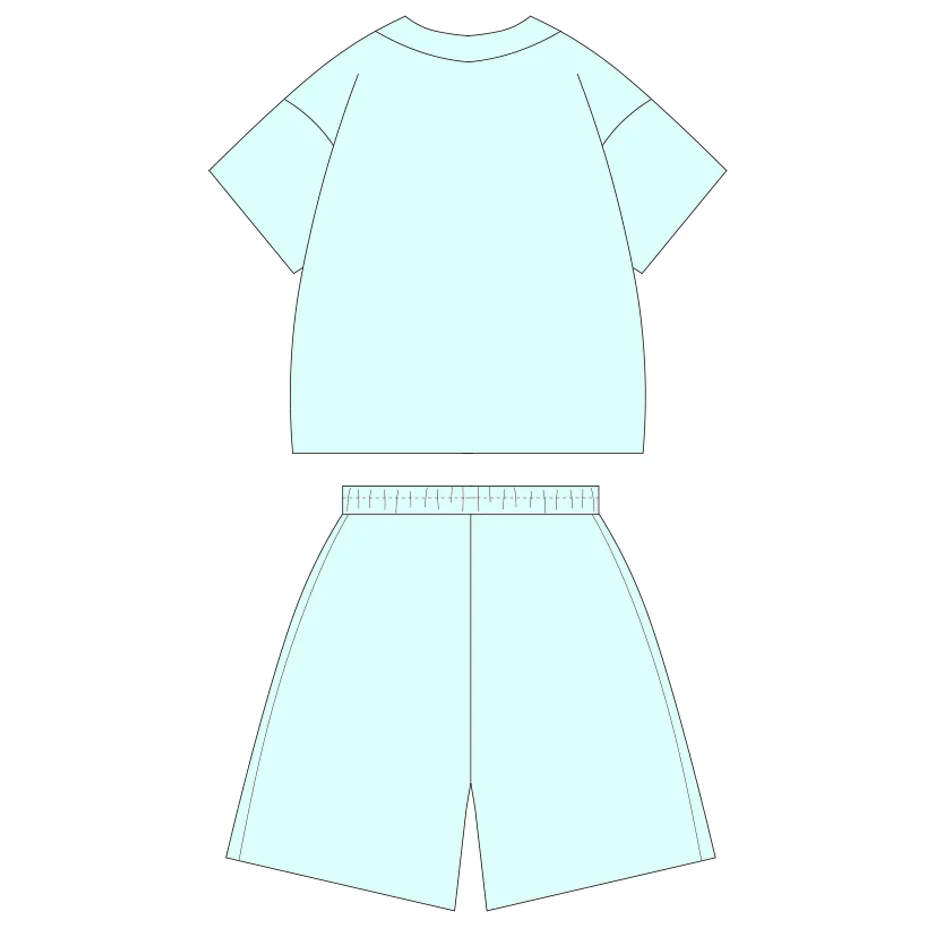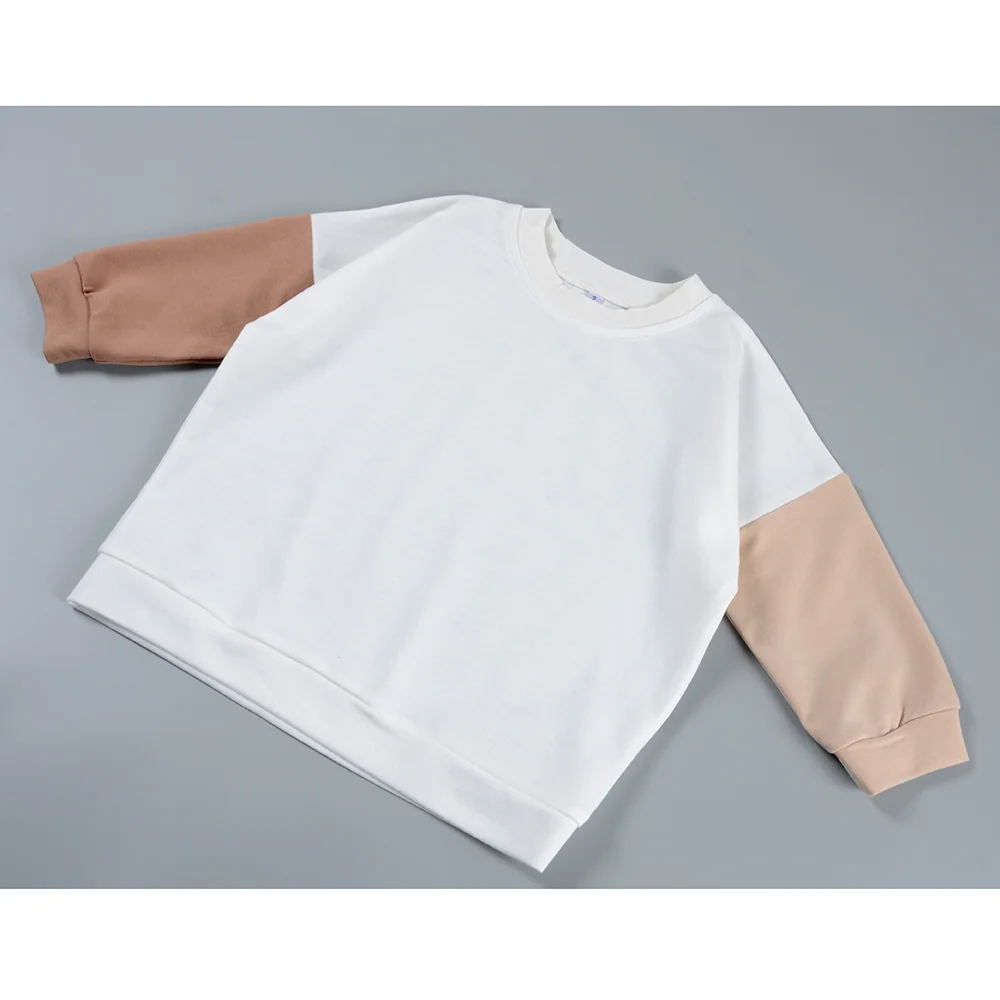Picking the right fabric for kids’ clothes isn’t just about looks—it’s about keeping kids safe, comfy, and ready for action. From soft, airy cotton to stretchy mixes that handle rough play, every fabric choice affects how long the clothes last and how well they work. This guide checks out how top-notch fabrics meet kids’ needs and follow global safety rules, helping stores and brands make smart picks.
Fabric Selection’s Importance in Kidswear
Choosing the perfect fabric for kids’ gear, like a kids t-shirt, goes way beyond style. It’s about comfort, toughness, and safety too. For folks buying children’s clothes in bulk, the fabric decides how well a shirt holds up to daily wear, feels on sensitive skin, and meets worldwide safety standards.
One company that nails this is Delpnana. With 14 years of making custom mom-and-baby clothes, they’re a trusted OEM/ODM supplier for places like the USA and Australia. They have a professional design team and decades of experience in apparel making. Their focus on quality shows in their strict follow-through on American and Australian safety standards for size, flammability, and overall garment integrity. Following strict product quality standards for garments, we focus on natural materials such as cotton and wool in fabric selection to ensure comfort, safety and environmental protection.
Comfort’s Critical Role in Kids’ Fabric Choice
Comfort is the top must-have when picking fabrics for kids’ clothes. Kids’ skin is super thin and sensitive compared to adults. Rough or fake fibers can make them itchy or even cause allergies.
Skin Sensitivity’s Need for Gentle Textures
Kids’ skin gets irritated by rough fibers or chemical treatments. That’s why super soft fabrics like combed cotton are the go-to. It goes through an extra step to remove short fibers and junk, leaving smoother yarns. Mostly made of soft, breathable, and sweat-absorbing natural fabrics, it fits the baby’s delicate skin. This works for everything from rompers to t-shirts.
Breathability’s Importance for Active Kids
Kids are always running around, so they need fabrics that let air flow and soak up sweat well. Cotton’s naturally awesome at this, but mixing in special knitting tricks makes it even better. A bad fabric traps heat or sweat, causing discomfort or rashes—no parent wants that.
Combed Cotton’s Ideal Balance of Softness and Strength
Combed cotton is a standout. It mixes super softness with toughness. It doesn’t fray as much as regular cotton and feels cozy on the skin, perfect for t-shirts kids wear every day.
Fabric’s Ability to Withstand Repeated Washing
Being tough isn’t just about not tearing. It’s also about keeping shape, color, and feel after tons of washes—a big deal for parents buying kids’ clothes.
Fabric Integrity After Dozens of Washes
Lots of washing can wreck cheap fabrics fast. They might shrink weirdly or lose their shape. High-quality cotton mixes or special knits hold up way better. Multiple quality control procedures are set up during the production process to control product quality. These checks make sure shirts still fit right after lots of laundering.
Prevention of Pilling, Shrinking, or Fading
The trick is in the fiber and finishing. Pre-shrunk cotton keeps size changes low after washing. Anti-pilling treatments keep the surface smooth. Fade-proof dyes make bright prints stay cool, which is key for fun designs.
Engineered Fabrics’ Long-Term Value for B2B Buyers
Special fabrics stay consistent across big batches—a must for making thousands of shirts. They also cut down on returns from wear issues. If you’re sourcing wholesale kids t-shirts, this reliability is a game-changer.
Stretch Requirements in Kids’ Clothes
Kids bend, jump, and climb, so their clothes gotta keep up without ripping or stretching out. Stretch is super important for comfort and safety during playtime.
Elastic Recovery’s Impact on Playwear Performance
Elastic recovery is how well a fabric snaps back after being stretched. Stuff like spandex mixed with cotton boosts movement while keeping shape—great for leggings or snug t-shirts.
Comparison of Blended Fabrics and 100% Cotton
Pure cotton is breathable and soft, but adding a bit of spandex (like 5%) gives stretch without losing that cozy feel. This makes mixed fabrics better for active gear like play sets.
Color Retention in Kids’ Clothing
Keeping colors bright isn’t just about looks—it shows the fabric and dye quality. Fading prints mean unhappy customers.
Fiber Type’s Influence on Color Fastness
Cotton soaks up dye differently than synthetics like polyester. Reactive dyes bond tight with cotton fibers, giving bright colors that don’t fade much, even after lots of washes.
High-Definition Prints’ Dependence on Fabric Compatibility
Clear prints need the right fiber and surface. Smooth combed cotton is perfect for screen printing or heat transfers used on kids’ graphic t-shirts.
Advantages of Reactive Dyeing Processes
If it fades under normal washing and following the washing instructions, you can contact the merchant for negotiation; avoid high-temperature and long-time soaking during washing to reduce fading. Reactive dyes sink deep into fibers, not just coat them, so colors stay vibrant with less bleeding over time.
Sustainable Materials in Kidswear
Sustainability’s not just a trend—it’s what today’s parents look for. They want eco-friendly options that don’t skimp on performance.
Parents’ Preference for Organic or Recycled Materials
With more folks caring about the planet, many want organic cotton or recycled polyester. These cut down on environmental harm while keeping clothes tough.
B2B Buyers’ Assurance of Environmental Compliance
For stores selling worldwide, picking suppliers with eco-certifications makes customs easier and boosts your brand with green-minded shoppers.
Ethical Sourcing Options from Leading Suppliers
We focus on natural materials such as cotton and wool in fabric selection to ensure comfort, safety and environmental protection. Ethical sourcing means using sustainable fibers and fair labor practices, which matters more and more to buyers.

Safety Standards Compliance in Kids’ Apparel
Kids’ clothes have to meet strict rules on flammability, chemical limits (like formaldehyde), and no choking hazards from extras like buttons.
Certifications for Sourcing Fabric
Certifications like OEKO-TEX® Standard 100 make sure textiles are free of harmful stuff. GOTS goes further, checking for organic materials and fair labor in the supply chain.
Mandatory Nature of Compliance
Comply with the Australian & American Standard for children’s clothing in terms of size, safety and flammability to ensure that the products are sold in compliance. Skipping these rules can mean rejected imports or legal trouble—not worth the risk for cheap fabrics.
Fabric Traits Enhancing Production Efficiency
Beyond making kids happy, fabrics affect how easy it is to make clothes. The right ones cut waste, simplify sewing, and give steady results for big orders.
Properties Streamlining Mass Production
Fabrics with stable GSM (grams per square meter) cut clean without fraying. Consistent dye batches avoid color mix-ups. Wrinkle-resistant finishes mean less ironing after making—all speeding up production.
Inventory Stability’s Impact on Lead Times
Consistent batches cut delays from mismatched colors or textures, a headache with shaky suppliers who skip good quality checks.
Fabric Choice’s Influence on Customization Options
Customization is huge in B2B fashion. Logos need clean stitching, prints need even sticking, and sublimation needs specific polyester mixes—each needs the right fabric match.
GSM Weight and Weave’s Effect on Custom Orders
Heavier GSM fabrics give better opacity for light prints. Tighter weaves make smoother surfaces for sharp images in heat transfer or sublimation printing.
Looking for premium, compliant fabrics for your kidswear line? Explore Delpnana’s certified collections and create garments parents trust!
FAQ
Q: What is the best material blend for active kids?
A: A cotton-spandex blend provides breathability with added stretch—ideal for mobility without compromising comfort during physical activity.
Q: How do I know if a fabric will hold up after multiple washes?
A: Look for pre-shrunk fabrics treated with anti-pilling finishes; also verify if reactive dyes were used for color longevity post-wash cycles.
Q: Are there certifications I should demand when sourcing kidswear fabrics?
A: Yes—OEKO-TEX® Standard 100 ensures chemical safety; GOTS certifies organic content along with ethical production practices across supply chains.

